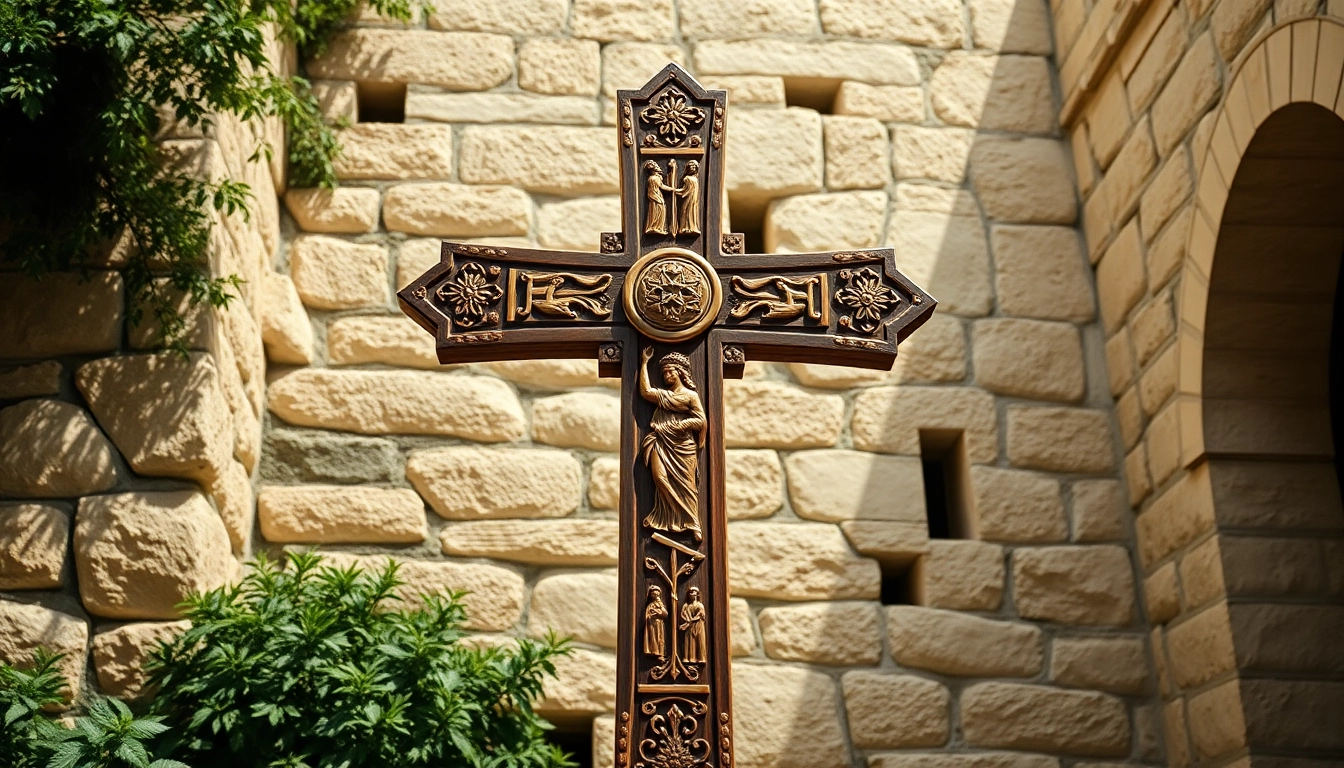Understanding the Essence of Jerusalem Crosses
The Jerusalem crosses are not just religious symbols; they encapsulate a wealth of history, culture, and theological significance. Known for their distinctive design, these crosses have been utilized by various Christian denominations and communities throughout centuries and across continents. Their intricate designs and the stories they tell are an embodiment of faith, identity, and heritage.
What Are Jerusalem Crosses?
The Jerusalem cross is a heraldic cross, prominently featuring a large central cross, often referred to as a cross potent, surrounded by four smaller Greek crosses—one located in each quadrant. This configuration is rich with meaning, primarily representing the Four Evangelists of Christianity: Matthew, Mark, Luke, and John. Moreover, the four smaller crosses symbolize the spread of the gospel to the four corners of the earth, highlighting the mission of the Christian faith to evangelize globally.
Historical Origins of Jerusalem Crosses
The origins of the Jerusalem cross date back to the early Crusades in the 11th century, where it emerged as a symbol of the Crusader Kingdom of Jerusalem. It became a potent emblem during the reign of Baldwin IV of Jerusalem, signifying both the kingdom itself and its aspirations. Over centuries, the cross has been associated with various orders and has undergone reinterpretations, but its association with Jerusalem has remained steadfast.
Key Characteristics of Jerusalem Crosses
Design Elements of Jerusalem Crosses
The design of the Jerusalem cross is characterized by its central cross flanked by the four smaller crosses. Each of these elements carries connotations that offer layers of interpretations—from the evangelistic mission to the playful art of heraldry. The cross is often depicted in various styles, including ornate patterns and minimalist designs, which reflect the artist’s interpretation and the cross’s intended use.
Materials Used in Jerusalem Crosses
Jerusalem crosses can be crafted from a range of materials, including wood, metal, and stone. Olive wood, particularly from the Holy Land, is a popular choice, giving the crosses a unique texture and warmth. Metal crosses, often made from silver or gold, are favored for jewelry, while stone crosses are common as decorative items or souvenirs. Each material lends itself to different aesthetic values and cultural meanings.
Variations and Styles of Jerusalem Crosses
While the traditional Jerusalem cross exhibits a standard design, there are many variations inspired by cultural contexts. For instance, some are elaborately carved, while others are adorned with gemstones or intricate engravings. Variations also occur based on size, with some crosses serving as small, personal tokens and others as large, ceremonial pieces. This diversity reflects religious practices across different Christian denominations as well as artistic trends over time.
The Role of Jerusalem Crosses in Christianity
Jerusalem Crosses in Liturgical Practices
In many Christian liturgical practices, the Jerusalem cross holds significant importance. It often appears in church decorations, on vestments worn by clergy, and during ceremonial events. For instance, during the celebration of the Eucharist or baptism, the Jerusalem cross may be used to signify the presence of Christ and to remind the congregation of their mission to spread the Gospel.
Use of Jerusalem Crosses in Christian Communities
And frequently, Jerusalem crosses are worn as necklaces or made into other forms of jewelry, serving as personal reminders of faith. They can also be found in Christian homes, where they are displayed as symbols of protection, blessings, and guidance. Various Christian communities utilize the cross in different ways, often infusing local cultural interpretations that enhance its universal message of salvation and hope.
Jerusalem Crosses and Ecumenical Dialogues
The Jerusalem cross also plays a role in promoting ecumenical dialogues among Christian denominations. Its shared significance across various branches of Christianity enables it to act as a bridge, fostering cooperation and mutual respect among followers of different traditions. This common symbol of faith encourages conversations about theological diversity and unity in the Christian mission.
Crafting and Caring for Jerusalem Crosses
Craftsmanship Behind Jerusalem Crosses
The craftsmanship of Jerusalem crosses is a blend of artistic tradition and religious devotion. Artisans often take great care in the production process, using age-old techniques passed down through generations. A well-crafted Jerusalem cross can take significant time to create, with artisans meticulously focusing on every detail to ensure that both the aesthetic and symbolic elements are well-represented. Some artisans engage with local communities to source sustainable materials, intertwining cultural identity with craft.
Maintenance Tips for Jerusalem Crosses
To ensure the longevity of Jerusalem crosses, certain maintenance practices should be adopted based on their material. Wooden crosses should be kept dry, cleaned with a damp cloth regularly, and stored in a cool, dark place to prevent warping. Metal crosses may require polishing to maintain their shine, while stone crosses should be carefully wiped clean of dust to retain their beauty. Regular care not only preserves their physical state but also honors their spiritual significance.
Choosing the Right Jerusalem Cross for You
Choosing a Jerusalem cross, whether as a gift or for personal use, demands careful consideration of its meaning and your intentions. Factors like size, design, and material should align with the recipient’s personality and lifestyle. A smaller, minimalist cross might suit someone who prefers subtlety, whereas an elaborately designed piece may resonate more with those who celebrate their faith visibly. Ultimately, selecting the right cross is about connecting with its deeper significance.
Exploring Popular Cultures and Jerusalem Crosses
Jerusalem Crosses in Art and Literature
Throughout history, the Jerusalem cross has inspired artists and writers, finding its place in various forms of art and literature. It has appeared in paintings, sculptures, and intricate mosaics, often symbolizing hope, faith, victory, and salvation. In literature, its mention is frequently tied to themes of redemption and the Christian journey, reinforcing its enduring legacy in both religious and artistic expressions.
Modern Interpretations of Jerusalem Crosses
In contemporary society, the Jerusalem cross has seen a resurgence in popularity beyond religious contexts; it increasingly appears in fashion, home decor, and everyday items. This modern reinterpretation offers new perspectives on the symbol, encouraging dialogues around identity and faith in an increasingly secular world. Young artists and designers are transforming the traditional cross into innovative designs, reflecting a new cultural relevance.
Jerusalem Crosses in Jewelry and Fashion Trends
The trend of wearing the Jerusalem cross as jewelry has gained traction, signifying more than just a religious emblem; it often serves as a fashion statement. From necklaces and bracelets to earrings and rings, the Jerusalem cross in jewelry design can vary from elegant simplicity to elaborate artistry. This versatility allows wearers to express their faith in different ways, blending spirituality with personal style.








